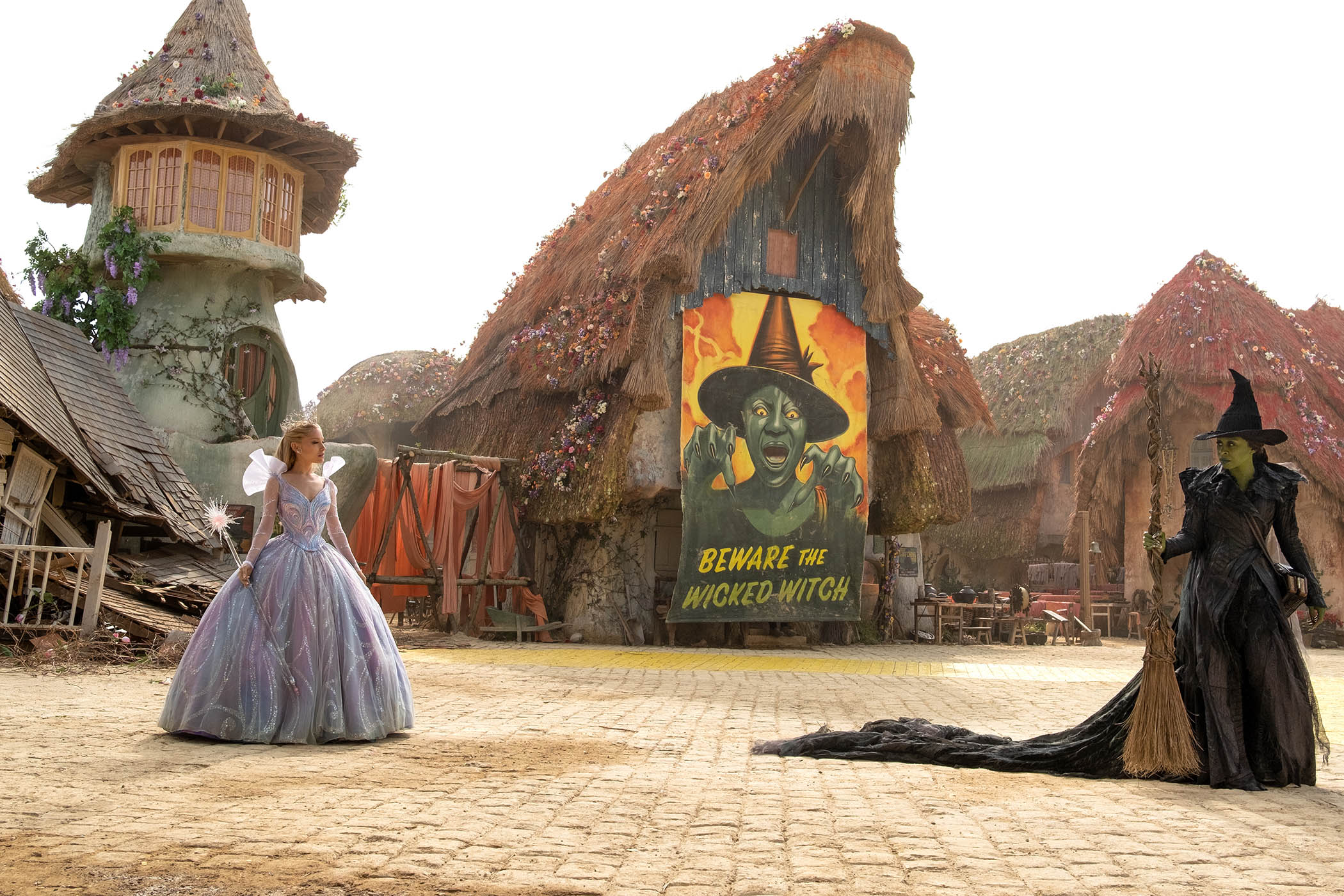You would have to be living under a rock – or perhaps a tornado-dropped clapboard farmhouse – to be unaware of the first cinematic instalment of Wicked. Released in an onslaught of aggressively colour-coded marketing and excruciatingly sincere public appearances by stars Cynthia Erivo and Ariana Grande, the adaptation of the Oz-themed stage musical arrived in cinemas almost exactly a year ago to near-universal approval. It went on to score 10 Oscar nominations, winning two (best costume design and production design).
Can the second half of the story, directed again by Jon M Chu, match the first? And, given that the running time of the first film was longer than the entire stage play, is there really that much left to say? I regret to report that, while Wicked: For Good repeats much of the same formula as the first picture, there is a crucial ingredient missing: humour. Without it, the spark is extinguished; the astringency that cut through the sentimentality of the first picture is gone. There’s no longer a mitigating distraction from the rigorously enforced and somewhat emetic colour palette of candyfloss pink and pea green. The pacing drags and the yellow brick road heads straight to Dullsville.
This instalment picks up shortly after the conclusion of the first film, which saw Erivo’s Elphaba, the misunderstood, green-skinned young woman who learned the truth about the Wonderful Wizard of Oz (Jeff Goldblum) zipping off into the distance on her ergonomically challenging broomstick.
In her absence, she is painted by those in power – mainly the scheming Madame Morrible (Michelle Yeoh) – as an existential threat to the very future of Oz. She is rebranded as the Wicked Witch of the West (a hate figure is always a useful tool when it comes to oppressing the masses). Along with Elphaba, the animal community of Oz and the Munchkins find themselves targeted as second-class citizens (the picture opens with the revelation that the yellow brick road was in fact built with the labour of enslaved animals).
What of the musical numbers, which in the first a film offered a supercharged energy boost? I would tell you if I could remember any of them
Elphaba’s schoolfriend Glinda (Grande) has been pressed into service by the oppressive Oz regime, as figurehead Glinda the Good. And don’t we know it. The term “good” is used so excessively that it starts to lose all meaning: in one brief glimpse of the shallow, silly Glinda of old, she muses on whether it might be possible to trademark the word.
But mainly, we see an older, wiser Glinda, who has grown as a person and who has been transformed by her friendship with Elphaba. Which is fine, except that making Glinda more sympathetic, not the preening, self-absorbed princess of the previous film, strips back much of the fun and foregrounds the more irksome, simpering qualities in Grande’s performance. Morrible, ostensibly the main villain of the second half of the story, is impeccably styled but rather underpowered as an antagonist. Yeoh’s performance is one-note – and so, unfortunately, is her singing.
What of the musical numbers, which in the first film offered a supercharged energy boost to power us through the extended running time? I would tell you if I could remember any of them. While both Grande and Erivo give it their all, when it comes to the actual songwriting, we are left with a vague impression of a characterless, overproduced wash of warbling.
The one exception is a number in which Glinda negotiates what seems like a rapprochement between Elphaba and the wizard himself (Goldblum, at least, is having fun, with his emerald velvet frock coat and his carnival patter) and magic – or at least the illusion of magic – ensues. The truce between Elphaba and the wizard is short lived, however, abruptly curtailed when she opens a secret door and discovers his walk-in wardrobe-cum-animal torture chamber.
Thanks to production designer Nathan Crowley’s maximalist approach, the film does at least look spectacular. An explosion of CGI art nouveau flourishes and Orwellian propaganda banners, it’s densely detailed and, under all the ticker tape and glitter, very slightly sinister. The ravishing costumes are another triumph, despite the overuse of Trumpian gold braiding and tassels. But even this frothy levity cannot do enough to counter all the exhausting earnestness.
Photograph by Giles Keyte/Universal Pictures

